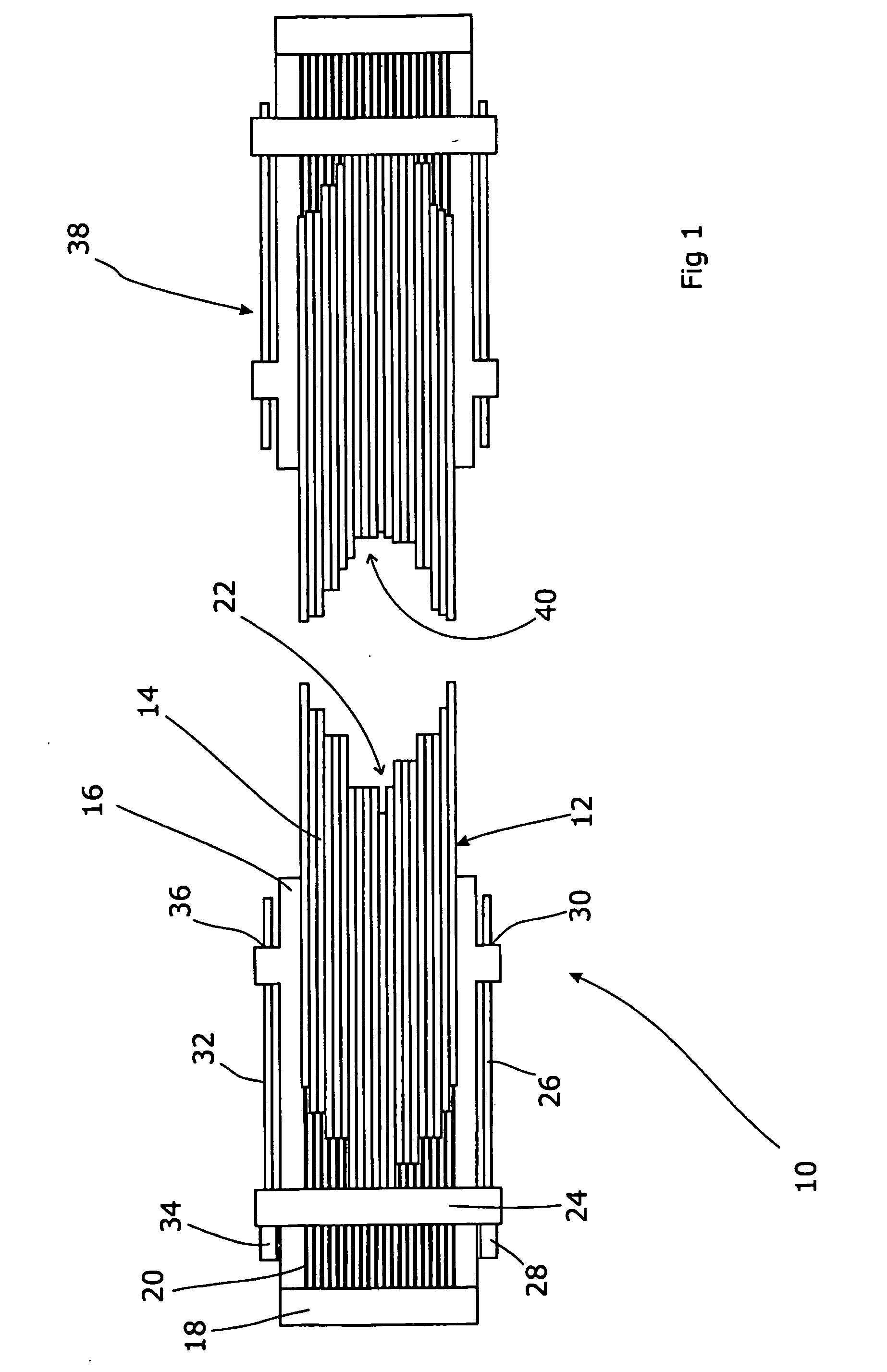Multi-Leaf Collimators
a collimator and leaf technology, applied in the direction of electrodes and associated parts, radiation therapy, therapy, etc., can solve the problems of dynamic radiation delivery discontinuities, achieve continuous and smooth treatment delivery, increase the available leaf speed, and accelerate the effect of dose ra
- Summary
- Abstract
- Description
- Claims
- Application Information
AI Technical Summary
Benefits of technology
Problems solved by technology
Method used
Image
Examples
Embodiment Construction
[0017]FIG. 1 shows an MLC 10 of the type to which the present application can be applied. A first bank 12 of elongate leaves 10 are arranged in a side-by-side array with their longitudinal edge arranged transverse to the beam, their depth arranged parallel to the beam, and their thicknesses transverse to the beam. Each leaf is mounted in a suitable guide (not shown) supported on a carriage 16. The guide is usually machined so as to support the upper and lower longitudinal edges of the leaves 14 and allow them to slide backwards and forwards in the longitudinal direction. A bank of motors 18, one for each leaf, each drive a leadscrew 20. Each leadscrew 20 engages with a captive nut or other threaded section within a leaf 14; thus as the motor 18 drives the leadscrew 20, this forces the captive nut along the leadscrew 20 and draws the relevant leaf 14 longitudinally backwards or forwards, depending on the direction of rotation of the motor.
[0018]In this way, the leaves 14 can be drive...
PUM
 Login to View More
Login to View More Abstract
Description
Claims
Application Information
 Login to View More
Login to View More - R&D
- Intellectual Property
- Life Sciences
- Materials
- Tech Scout
- Unparalleled Data Quality
- Higher Quality Content
- 60% Fewer Hallucinations
Browse by: Latest US Patents, China's latest patents, Technical Efficacy Thesaurus, Application Domain, Technology Topic, Popular Technical Reports.
© 2025 PatSnap. All rights reserved.Legal|Privacy policy|Modern Slavery Act Transparency Statement|Sitemap|About US| Contact US: help@patsnap.com


